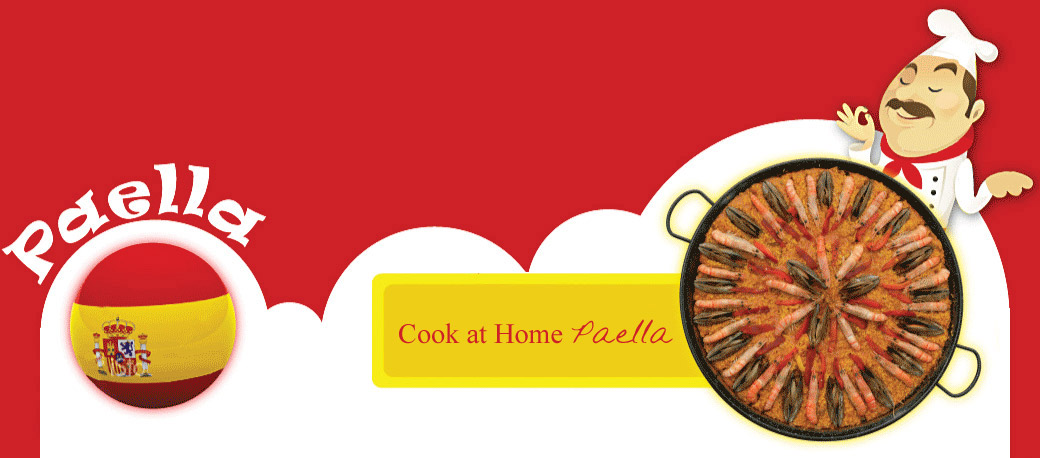Paella Recipes
Below are some links to some great Paella Recipes
Below are some secret tips and tricks to making the perfect Paella
First of all the paella pan should be completely level and the liquid shouldn’t exceed the handle rivets. The rice should never be washed. It can be added to the ingredients being fried, or added to the liquid or stock when at boiling point. Once the rice has been added and spread out evenly it should be stirred too much again.-
One technique used by seasoned Paella makers to know how much rice can be cooked in the liquid is the diagonal technqiue. The idea is to pour the rice into the boiling liquid from one siwd of the pan to the next until a finger thick amount of rice is sticking out above the liquid across all of the pan, then to distribute this rice evenly as before.
Spices are usually added when the water or stock is boiling just before adding the rice and it will help you to make a delicious Paella.
To finish off, a practical tip: after washing the pan up, and drying it completely, oil then pan with some olive oil using a paper towel and in this way you can avoid it rusting.
Always cook Paella in a pan of the adequate size (min 40cm). The bigger the pan, the thinner the finished rice and in this way the rice is less liable to stick. Use fresh and natural ingredients.
But remember the most important thing in paella is the rice (we recommend Calasparra Rice from Murcia in Spain), so don’t exceed in quantities.
The olive oil should be extra virgin. A rough measure is a cup of oil for each kilo of rice. The proportions of rice and liquid vary depending upon the type of rice (4 litres to 1kg Rice when using Bomba and 3.5 litres to 1kg when using Calasparra) and the hardness of the water. The heat should be evenly distributed under the pan.
The Paella should cook at a strong simmer, especially at the beginning. At the end of the cooking process, you can reduce the heat a little and continue until the ice has absorbed all of the liquid (15-20 minutes). You can test the rice after 15 minutes to see how it’s doing. The rice should be a little hard at its core.
Take the pan off the heat and allow it to stand a few minutes before serving.
Spanish Rice is EVERYTHING….
A true Paella pan is necessary, and authentic, imported Spanish Paella rice is non-negotiable for this dish. A popular brand is Calasparra or Bomba.
Paella rice, shortgrained and round, has been developed for maximum absorbency, while still maintaining individual integrity of the grains.
Arborio rice is NOT suitable, as that variety lends itself to creamy smoothness and Paella calls for plump, individual grains. Paella Rice is much more absorbent than other rice; in fact, the ratio of rice to broth is 1 – 4, versus the 1-2 formula for our standard American long grain rice, or the 1 -3 used to produce a creamy risotto.
Paella is a simple rice dish. If you use authentic Spanish ingredients, there is no such thing as failure.
Paella has universal appeal with many variations, but the key ingredients remain consistent
Here are a few tips to make best use of your Paella Pan.
Your stock, this is the soul of your paella – make it rich and flavoursome with fish or chicken stock, shrimp shells and seasonings (using authentic Spanish Smoked Paprika).
Use the correct rice. It is the difference between passable and exquisite paella. Firm and absorbent rice is the key. Always use short-grained rice, such as Bomba or Calasparra – it absorbs lots of rich of stock with each grain remaining distinct. Do not use any substitute such as Arborio, Sticky Asian short grain, fragile and aromatic basmati or regular long grain American rice as these are not absorbent.
The heat on your Paella Pan must be very hot and even to start with. Reducing the heat during cooking.
Remember, as the last of the liquid evaporates during the last 5 minutes the rice at the bottom becomes socarrat (caramelised) , it should not burn, if it begins to smell burnt, turn it off..
|

